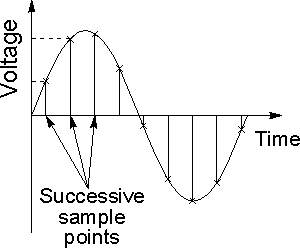Today, signals, i.e., quantities that fluctuate over time with high frequency, have acquired a great amount of importance and are being used in many fields, especially communication. Digital signal processing involves converting digital data into signals, making its transfer easier and subsequently converting these signals back into the original form.
A signal has many characteristics or domains such as time domain, spatial domain, frequency, wavelet domain, etc. Anyone among these can be used to process a respective signal. From among these, the engineer usually selects the one that best represents the characteristics of the signal concerned or, in other words, the one from which data can be obtained easily. To ascertain the required characteristic, the engineer may try out many among these properties.
The use of signals has gone up especially with the use of computers. Computers can analyze and process only digital (discrete) data and cannot handle analog (continuous) data. Thus, conversion of the signal from analog to the digital form becomes necessary. The digital signal is exactly similar to the analog signal that it has been obtained from; some mathematical techniques such as the Nyquist-Shannon sampling theorem are used. Usually, after analysis or transformation, the output signal is converted back to the analog form.
Usually, the time or the space domain of the signal is used for its processing. The signal that is received is usually enhanced by filtering. This process transforms some of the surrounding signals to the one that is under consideration. Among this filtering technique, there are many types:
- In the case of linear filtering, the input signal is transformed linearly to obtain the output signal. In the case of non-linear filtering, other transformations take place as well.
- Filtering can also be classified as casual and non-casual. Casual filtering makes use of only the previous input signal samples, whereas; non-casual filtering makes use of the future samples as well.
- The filters may also be time-variant or invariant. Those that are invariant do not change over a period of time, while time-variant or adaptive filters change over a period of time.
- Finite impulse response filters make use of only the current input signals as samples while filtering. Simultaneously, infinite impulse response filters make use of the output signals that have been generated previously as well.
To study the signal’s different properties, it is first converted into the frequency domain from space or time domain, and then its power spectrum is subsequently obtained from it. Fourier transforms are usually used for this purpose. By studying the frequency domain, an engineer can find the missing frequencies in a particular signal.
Digital signal processing is likely to acquire more importance in the future and the advancements in technology. They are used in some scientific research apart from the industrial applications of the same.






